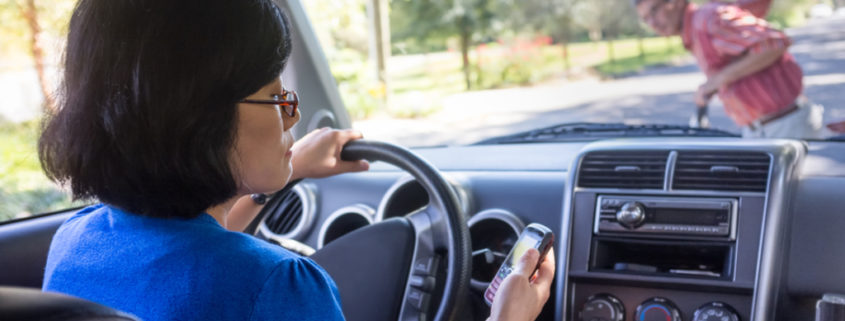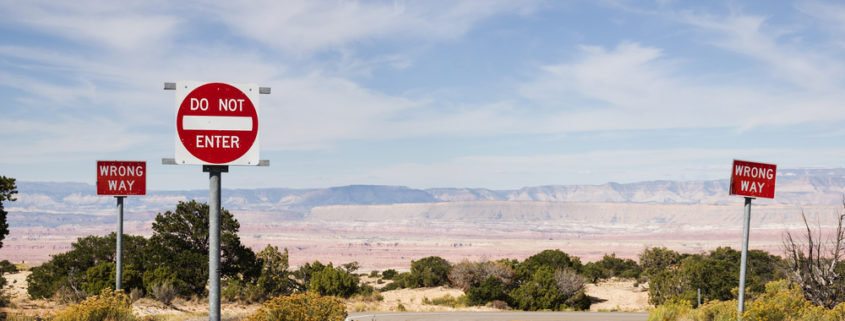Driving and Cell Phones Are a Deadly Combination
Injuries and deaths due to distracted driving—primarily from the use of cell phones—are increasing. Driving and cell phones are a deadly combination.
A study of driving and cell phone use in 2017 found that almost 90 percent of drivers reported using their cell phones while operating a vehicle. The study also found that drivers spent more than three minutes per hour on their phones, a distraction that significantly increased their chances of having a car accident.
The National Highway Traffic Safety Administration (NHTSA) reported that distracted driving caused 391,000 injuries from motor vehicle accidents in 2015, and 3,450 deaths in 2016. Of these fatal crashes, 14 percent involved the use of a cell phone.
Cell phone use is often under-reported in accident statistics, however. NHTSA’s Fatality Analysis Reporting System Encyclopedia tracks the causes of motor vehicle accidents. Their information relies on drivers or accident witnesses reporting cell phone use. According to a report from the National Safety Council, “Crashes Involving Cell Phones: Challenges of Collecting and Reporting Reliable Crash Data,” police may not report cell phone use if another violation contributed to the accident. For example, the police report may say that the driver failed to stay in the proper lane, but they may not report that it was due to cell phone use. It may be years before we know the true picture of how many injuries and deaths are caused by distracted drivers, particularly those involving cell phones.
Anything that takes a driver’s eyes or attention off the road is potentially an accident waiting to happen. As a result, many cities and states have passed laws to ban texting and driving.
Tucson ban on cellphones and driving
The Tucson City Council voted last year to regulate the use of cell phones and portable electronic devices while driving. The Council passed a hands-free ordinance making the use of handheld electronic devices while driving a primary offense, which means that police officers can pull over drivers they see or suspect are using a cellphone. The mere fact that a driver is holding a cell phone in his or her hand is an infraction.
A previous law stated that drivers could only be cited for cell phone use if the officer had pulled them over for another reason. A similar law has been in effect in Pima County since 2017.
The change is designed to prevent distractions from texting and using phones for other purposes, such as social media, while operating a vehicle. Under the new law, drivers are permitted to use a hands-free device. Drivers cannot use a device that is not hands-free while driving or while stopped on a street or highway (such as at a stop light or sign).
Ticketing for this offense started in late March. A first-time violator can be fined $50, although if there is an accident the fine will be a minimum of $250.
Arizona—only one of 3 states with no texting ban
Arizona is currently one of only three states that does not have a law that bans texting while driving. In 2016, AT&T analyzed data from a campaign called It Can Wait and found that texting bans are working—states with texting bans have far lower rates of texting while driving. This means fewer drivers in the 47 states that ban texting and driving are putting themselves or others at risk for accidental injury or death.
Last year the Arizona Senate considered a law to ban texting while driving. Although the bill that was put forward by committee was not passed, in July Governor Doug Ducey signed into law a bill that prohibits teenagers from texting while driving when they have a learner’s permit, and within the first six months of getting their driver’s license.
Reduce your risk from distracted driving
You can’t control what others do, but you can reduce your chances of injury from an accident by not using your cell phone at all when you’re driving. According to the National Safety Council, drivers having a phone conversation may miss up to 50 percent of what’s going on around them even when using a hands-free device. Texting is even more of a distraction. A driver’s eyes will be off the road for an average of 4.6 seconds while texting, which at 55 mph means the car can travel the length of a football field without the driver paying attention.
If you are walking or bicycling, it is just as important that you stay focused on your surroundings rather than your electronic device.
Remember also to use your seat belt to reduce your risk if you are involved in an accident.




